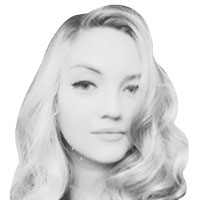Americans have heard it again and again. If people implement social distancing and responsibly self-quarantine, they may be able to save lives and curb the surge of coronavirus infections that could catastrophically overwhelm the country’s public health system.
But one thing remains unclear: Will they do it?
Well, they have before.
“One parallel is the 1918 influenza pandemic, but it took place during a different time, different media environment, and during a war,” said Scott Knowles, author of The Disaster Experts: Mastering Risk in Modern America and a history professor at Drexel University who focuses on disaster. “It took them a while to get to where we are today, with full-city shutdowns, though many cities did get there.”
Though there are apt historical parallels to the current coronavirus pandemic, Knowles said the response in the U.S.—where both the president and the Centers for Disease Control and Prevention (CDC) have advised the entire country against participating in large gatherings—is essentially unprecedented.
There were also glaring cultural differences during the 1918 pandemic. According to Knowles, there was, at the time, already a very strong national propaganda campaign “around solidarity and sacrifice” in the United States by the time churches, schools, and other public gatherings in some cities closed over the so-called Spanish flu.
“In some cities, that really caught on,” said Knowles. “You could see that this spirit for public service, for following orders, for coming together in a crisis dove-tailed with the war effort.”
“If we could channel some of that wartime spirit—without the wartime press suppression—then we would tap into something good,” he continued. “But it requires leadership and clear communication, which we haven’t really seen from the White House.”
The other most obvious concern—assuming supply chains hold up, and that people are able to access the food and other basic goods they need to survive in relative isolation long-term—is a psychological one.
Knowles pointed to an episode of Taxi that aired in 1982 while the Cold War was raging. Danny DeVito’s character Louie builds a fall-out shelter inside his office, stockpiled with food and supplies, where he retreats—but only lasts for one day.
“Even in popular culture, there was a sense that it was a joke,” said Knowles. “We were preparing to go into these situations, but we couldn’t do it. Why? Because the isolation makes us go stir-crazy, and we don’t have experience with it.”
Vickie Mays, a professor of psychology at UCLA and a clinical psychologist trained in disaster and emergency response, said much of the anxiousness from those who are in isolation today—aside from the significant job and health concerns—is a product of modern media.
“The combination of all news channels—CNN, MSNBC, Fox News—it’s constant,” said Mays. “What you’re getting is people are being overloaded with information that keeps changing.”
“When people get very stir crazy is when they don’t sleep well,” said Mays. “We’re trying to encourage people to exercise. Watch a cooking show! You have time to mess up all the dishes and then do them. They need to be very consciously FaceTiming, checking on people, engaging yourself in things that put you in a more open, generous place, as opposed to engaging the news cycles for too long.”
Of course, Mays said, eating and drinking may be the primary coping mechanisms used by those feeling anxiety during the large-scale lockdowns. (Others may turn to ramped-up substance use.) Instead, she suggested looking for other outlets for stress, like dance-a-thons, videoconferencing with friends, and games.
“Merriment will help us to cope with the seriousness of this epidemic,” she said.
There are several useful guides out by now for how to maintain mental health while social distancing—or self-isolating or self-quarantining. They often seem to be targeted at millennials and other young people. But while stories of Spring Breakers and others thumbing their noses at social distancing continue to circulate widely, so, too, do pleas for resistant Baby Boomers to play along.
Small companies like Aging is Cool, which aims to help older adults “stay strong, stay smart, and stay social,” have launched virtual recreational programs aimed at the demographic most vulnerable to serious illness or death in connection with coronavirus infection.
“It’s going to be a really rough time for these folks because they’re afraid they’re going to die,” said Amy Temperley, who co-founded the company in 2017. “When we add a reason to get up every morning, we watch those cognitive abilities come back. It’s really important that our brains are thinking, interacting, and doing things all the time.”
In the United States—with a few early exceptions involving patients who defied quarantine recommendations—it’s largely been left up to each individual to participate in social distancing for as long as is needed.
But China and Italy have both dealt their citizens stringent orders involving movement restrictions. And on Thursday Israeli Prime Minister Benjamin Netanyahu announced that “emergency regulations” in Israel would command most residents to stay at home. “This isn’t a request, this isn’t a recommendation, but a binding requirement that will be enforced," said Netanyahu.
Experts have said that those kinds of movement restrictions in the U.S. might not be constitutional. Still, local police departments are doing what they can to try to enforce recommendations and health orders. For example, in San Francisco, Police Chief Bill Scott said officials are primarily looking for citizens to voluntarily comply with the city’s shelter-in-place mandate, but that officers could write citations for those failing to comply with it, if necessary.
“We know that the system can’t keep us locked down,” said Knowles. “We will, as individuals, either follow the rules or we won't. There's not enough police to keep us all in our houses.”
On Thursday, California Gov. Gavin Newsom issued a statewide “stay at home” order in hopes of reining in the outbreak there, clarifying it would rely largely on the “social contract.”
Unfortunately, when looking at more recent precedents, Knowles said Americans do not tend to do what they’re told during disasters.
“We have a terrible track record of following official orders,” he said. “Think about evacuation orders, and all of the chaos that ensues from that. Some people feel they don’t trust the government. Some people feel they know more than the experts. There’s class considerations. People have strong incentives for disobeying disaster orders.”
Knowles also noted that the notorious lack of coronavirus testing in the United States has created an incomplete picture of outbreaks. That means some Americans have found themselves social distancing even if they don’t know of any cases nearby.
“For most people, it won’t feel relevant,” he said. “The minute you get these large-scale orders, but there’s been no cases reported in your town, why should we have to follow that? That seems like an order for New York and not for us. You can see the dangers of the erosion of public trust.”
Joshua Ackerman, an associate professor of psychology at University of Michigan, said that determining who will follow recommendations for social distancing is best understood by examining their motivations.
“Younger people tend to hold a greater sense of invulnerability than older people, which may make calls to socially distance based on personal safety relatively ineffective for this audience,” said Ackerman. Framing public health messages in ways that fit the motivations of specific audiences, he said, will result in better outcomes.
But, as Knowles and Ackerman both noted, people struggle with uncertainty.
“In situations like this one, where information is constantly changing, and a lack of clarity about the state of the problem inevitably exists, people usually experience a high degree of anxiety,” said Ackerman. “This response can crowd out the effort needed to think things through in deep ways, and instead lead individuals to seek quick, immediate answers in order to relieve the anxiety.”
That’s what leads to things like panic-buying, said Ackerman, which recently led the U.S. to go on a completely unnecessary shopping spree for toilet paper.
“Unlike, say, a dangerous predator or violent person, this virus isn't chasing after us,” added Ackerman. “Therefore, taking a little extra time to breathe, consider alternate ideas and information, and perhaps trying to self-distance—thinking about oneself from an external perspective—all may help reduce feelings of anxiety and promote more wise decision-making.”
Still, Knowles said, “To enforce these kinds of public safety measures around closures, the public has to self-enforce, and the only way that works is if we have a functioning social contract.”
Suffice it to say an historically polarized political system, decades of surging inequality, media compartmentalization, and early—well-documented—governmental failures at containing the outbreak do not help on that front.
“I’m desperately concerned that the social contract in America is frayed, and we’re seeing it in ways we’ve never seen that before,” he continued. “It’s fine not to trust the president. It’s not fine to put your neighbor’s life at risk.”







